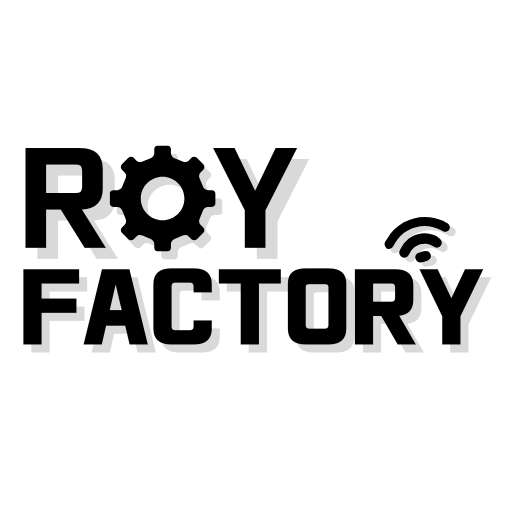What Is Kubernetes? The Beginner’s Guide to Container Orchestration
- What Is Kubernetes? The Beginner’s Guide to Container Orchestration
- 1. Why Do We Need Kubernetes?
- 2. So What Is Kubernetes?
- 3. Analogy: Ships and Ports
- 4. Key Features of Kubernetes
- 5. Kubernetes Architecture (High-Level)
- 6. What Problems Does Kubernetes Solve?
- 7. Kubernetes in Action: A Simple Workflow
- 8. Real-World Use Cases
- 9. Kubernetes vs Docker vs Docker Swarm
- 10. Challenges in Learning Kubernetes
- 11. Summary
- 12. What’s Next?
What Is Kubernetes? The Beginner’s Guide to Container Orchestration
If you’re new to the world of cloud-native applications, containers, and DevOps, chances are you’ve come across the term Kubernetes (often abbreviated as K8s). But what exactly is Kubernetes, and why does everyone seem to be talking about it?
In this post, you’ll learn:
- Why Kubernetes is necessary in a modern DevOps pipeline
- What problems Kubernetes solves
- The key features of Kubernetes
- How it works behind the scenes
- Real-world examples and use cases
Let’s dive in.
1. Why Do We Need Kubernetes?
Containers like Docker have revolutionized the way we build and run software. They offer consistent environments, portability, and efficiency. But once you start running dozens or hundreds of containers across multiple servers, things get chaotic.
Let’s take an example:
Without Kubernetes
- You deploy 20 containers across 3 servers
- A server goes down — someone has to restart containers manually
- A sudden traffic spike hits — you need to scale out fast
- You update an app — but you need zero downtime
- You need load balancing, service discovery, and health checks
Managing all of this manually is not only error-prone, but it’s nearly impossible at scale.
That’s where Kubernetes comes in.
2. So What Is Kubernetes?
Kubernetes is an open-source container orchestration system originally developed by Google and now maintained by the CNCF (Cloud Native Computing Foundation).
In simpler terms, Kubernetes helps you:
- Deploy applications in containers
- Manage container lifecycles
- Scale apps automatically
- Recover from failures automatically
It’s like an air traffic controller for your application containers.
3. Analogy: Ships and Ports
Imagine your containers are ships, and your servers are ports. You want to send ships to the right ports, keep track of them, repair broken ones, and ensure smooth sailing.
Kubernetes = Port Authority
It tells ships where to dock, balances traffic, monitors ship status, and handles maintenance — automatically.
4. Key Features of Kubernetes
| Feature | Description |
|---|---|
| Self-healing | Failed containers are restarted automatically |
| Auto-scaling | Add or remove containers based on traffic load |
| Rolling updates | Update apps without downtime |
| Service discovery | Apps can find and talk to each other automatically |
| Load balancing | Distribute traffic evenly across containers |
| Configuration management | Inject secrets and config files at runtime |
| Declarative setup | Use YAML files to describe how your app should run |
5. Kubernetes Architecture (High-Level)
| Component | Role |
|---|---|
| Cluster | A group of machines (nodes) running containers |
| Node | A single machine (physical or virtual) |
| Pod | The smallest deployable unit, holds 1+ containers |
| Deployment | Manages app versioning and rollout |
| Service | Exposes Pods as a network service |
| Volume | Persistent storage for containers |
| ConfigMap/Secret | Inject config data and credentials into Pods |
We’ll go into each of these in future posts.
6. What Problems Does Kubernetes Solve?
Kubernetes handles several real-world challenges:
- Crash recovery: Auto-restarts failed containers
- Load spikes: Dynamically spins up more replicas
- Traffic routing: Handles internal/external access and routing
- DevOps needs: Works well with CI/CD pipelines
- Cloud portability: Run the same config across AWS, GCP, Azure, or on-prem
7. Kubernetes in Action: A Simple Workflow
- You write a YAML file describing your app (what image to run, how many replicas, what ports)
- You
kubectl applythat file to a Kubernetes cluster - Kubernetes deploys Pods across Nodes
- A Service exposes the Pods
- Kubernetes monitors the health, scales the app, and auto-recovers as needed
8. Real-World Use Cases
- Netflix: Manages microservices with custom K8s tooling
- Airbnb: Uses Kubernetes for scalable deployments
- Spotify: Manages thousands of services and teams with Kubernetes
- Naver, Kakao, Coupang: Korean tech giants leveraging Kubernetes in production
9. Kubernetes vs Docker vs Docker Swarm
| Feature | Docker | Docker Swarm | Kubernetes |
|---|---|---|---|
| Orchestration | No | Yes | Yes |
| Scalability | Low | Medium | High |
| Ecosystem | Small | Medium | Large |
| Popularity | High | Low | Very High |
Note: Kubernetes can actually run Docker containers — they work together.
10. Challenges in Learning Kubernetes
Kubernetes is powerful but complex. Common learning hurdles:
- Too many abstract concepts (Pods, Deployments, Services, etc.)
- YAML syntax is unfamiliar to many
- Network policies and service exposure are tricky
- Permissions and access control (RBAC) can be overwhelming
That’s why we’re starting this beginner series — to help you learn Kubernetes one step at a time.
11. Summary
| Concept | What You Learned |
|---|---|
| Kubernetes | Container orchestration platform |
| Benefits | Scalability, recovery, automation, portability |
| Architecture | Cluster → Node → Pod → Container |
| Key Features | Self-healing, scaling, service discovery, etc. |
| Why It Matters | Solves real DevOps challenges at scale |
12. What’s Next?
In the next post, we’ll look at the fundamental concepts of Kubernetes — things like Nodes, Pods, Namespaces, and Controllers. Understanding these is crucial before you start writing configs or running commands.
Stay tuned!
필요하시면 이 파일을 .md 마크다운 형식으로 저장해서 제공드릴 수 있어요.
다음 포스트인 “Kubernetes 기본 개념”의 영문 버전도 작성해드릴까요?
